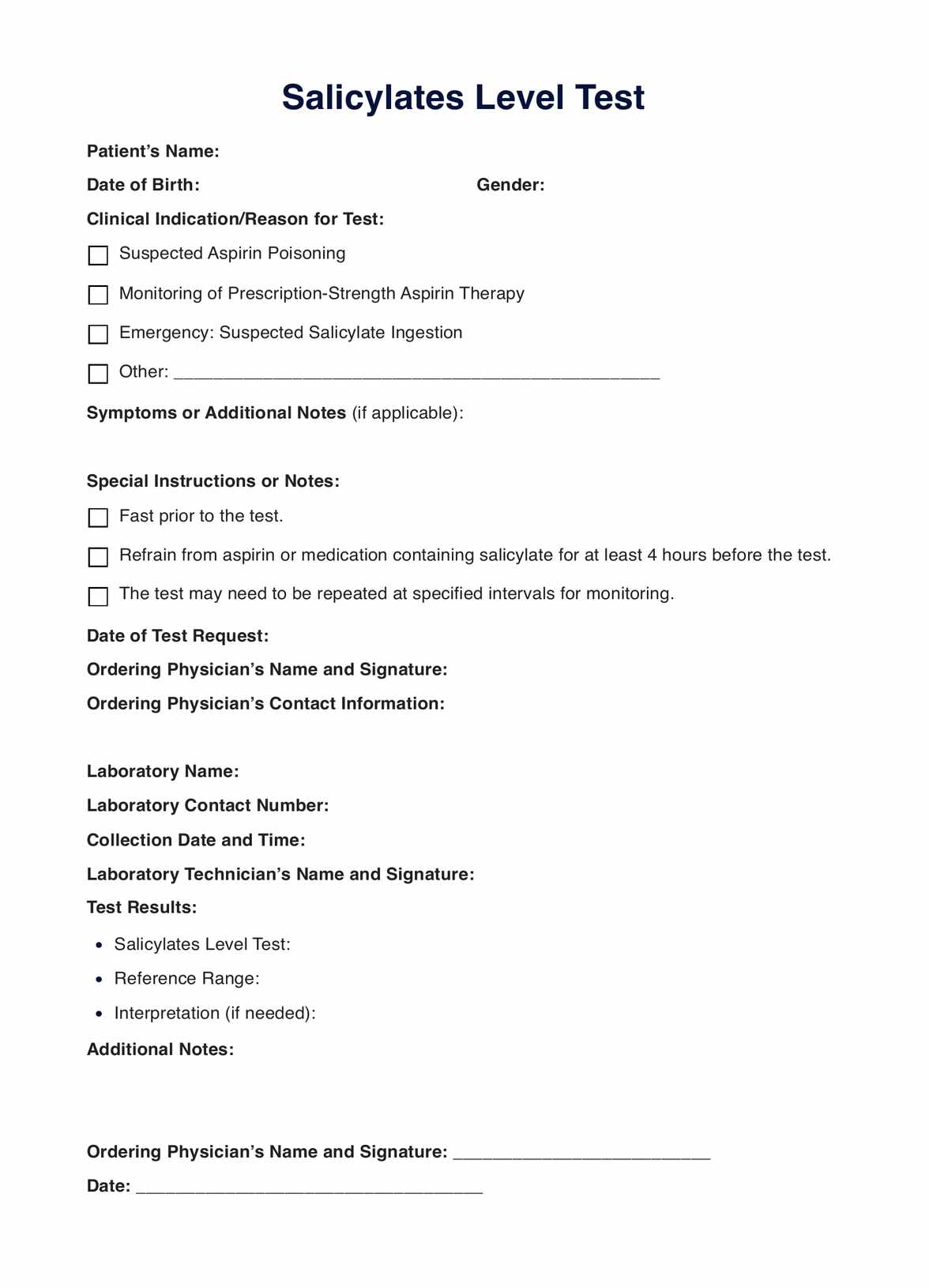General physicians, emergency department staff, and toxicologists are those who typically request a salicylate level test. The one asking will vary depending on the circumstance.

Salicylates Level
Discover the uses, result interpretation, etc., of the salicylates level test. Check out our short guide to learn more and download a free request form template.
Salicylates Level Template
Commonly asked questions
The salicylate level tests are used for diagnosis, monitoring, and during emergencies wherein the patient is suspected of having aspirin or salicylate-medication poisoning.
Collecting the sample for the salicylates level will take only a few minutes, and processing results for most hospitals and laboratories will take anywhere from 3 to 6 hours. However, do note that the duration time will vary depending on the specific laboratory.
EHR and practice management software
Get started for free
*No credit card required
Free
$0/usd
Unlimited clients
Telehealth
1GB of storage
Client portal text
Automated billing and online payments











